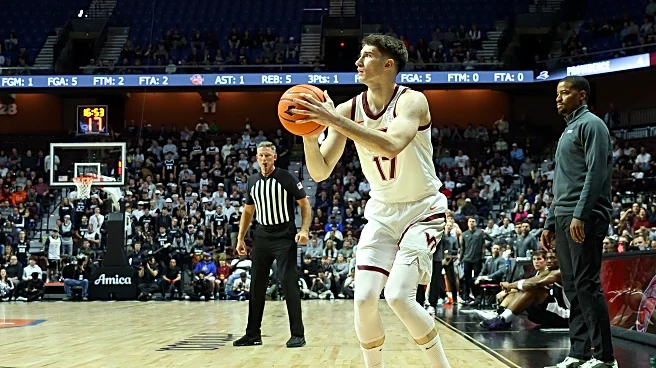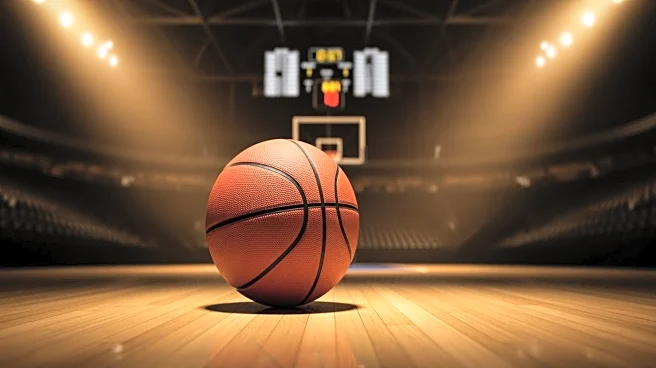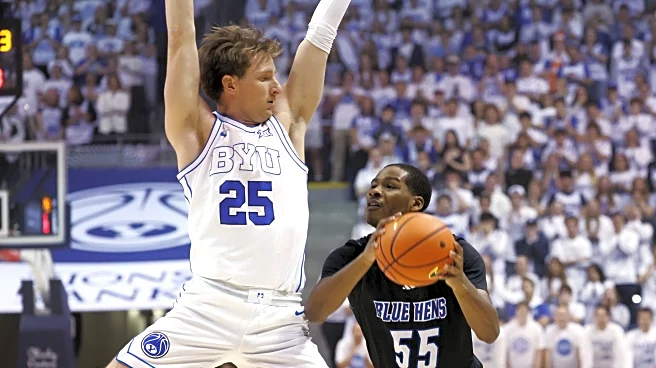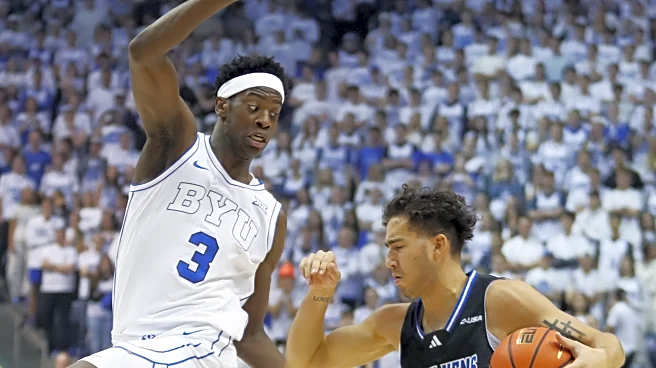AJ Dybantsa has been on most UConn fans’ radar since the Cooper Flagg arms race. When it became clear Flagg was a strong Duke lean, many looked to the Brockton, MA kid as the real prize.
The hype grew after
Flagg’s critically-acclaimed freshman year down in Durham; UConn gets another crack at a guy like this?! Unfortunately, UConn was never a serious contender for Dybantsa, who left no doubt with a quick BYU commitment after a prep year in Utah.
Now, the star freshman will try to spoil Alex Karaban’s homecoming on Saturday. The UConn-BYU matchup is inherently fascinating and most of that has to do with the Dybantsa problem.
Dybantsa’s statline through three games is eerily similar to Flagg’s. Through his first three games, he’s averaging 18 points, 7 rebounds, three assists per game, compared to Flagg’s freshman splits of 19-8-3. Their impact and playing styles have similarities too — both have NBA-ready athleticism, motor and polish that makes them impact two-way players the second they step on the court.
Dybantsa is arguably a toolsier, more explosive threat in college than Flagg, and that makes him a tougher scout for UConn. His quick-twitch drives, combined with the NBA frame mean he’s a terror on straight line drives. He has the advanced ball handling to get it out in transition and attack on his own. He’s also incredibly adept at drawing fouls and dictating the pace through pump fakes that get his defender in the air. If Dybantsa can’t convert at the cup, he’s shown elite second-jump ability to follow his shot, and that makes him a consistent putback threat you have to put a body on.
There aren’t that many freshmen that can get to the rim in this many ways so effectively.
He’s shot 13 free throws in three games. Solo Ball leads UConn with 18 freebies, but six of those came off fouled 3-pointers. UConn’s free throw rate is the only blemish on the defense resume so far this year, ranking 251st in the country per Bart Torvik. Between Dybantsa and lightning bug Robert Wright III, BYU puts serious pressure on the rim, and that opens up their spacing to launch threes.
Dybantsa can be a bull and live in the paint all he wants because BYU has the shooters around him to space the floor. He’s not a deadeye 3-point shooter, but he’s also not someone you can sag off and give the Andre Jackson treatment.
So who guards the kid?
At 6-foot-9 and 210 pounds, he’s a matchup nightmare for UConn’s personnel. Alex Karaban has the height and experience, but gives up footspeed and athleticism. Does that assignment also zap him of his movement shooting ability on offense?
Jaylin Stewart made life miserable for Eric Dixon last year, and has the ideal combination of athleticism and size. But the Villanova star was a bully ball disciple with range, something Stewart is perfect to handle. Dybantsa just wants to run you over, and while we’ve seen Stewey locked in, one reach-in foul could put him on the bench.
Jayden Ross is a wild card, as the junior has the athleticism to at least keep up, but gives up a three inch height advantage and is a beanpole compared to Dybantsa.
If it’s me, I give Stewey the first crack. He’s a momentum player that builds on positive plays. If he locks in and makes the first few possessions hell, he’s going to ride that wave. If Stewart doesn’t stay down on the pump fakes and picks up two cheapies, then Karaban’s headiness could slow him down.
The real answer here could also be a combination of all three; Hurley and the coaching staff have thrown different looks at guys before, and the Huskies have the depth to rotate the assignment.
Slowing him down is the key word. Dybantsa is going to get his, and it will be important for the staff to balance the tight rope of keeping expectations in check while not letting him run wild. They could also be looking at a Zach Edey situation, where you live with 25 points from the freshman, but fight like crazy to contain Wright III and Richie Saunders.
Per StorrsCentral, BYU’s big three account for 16 of the team’s 17 most frequent play types, and all three are averaging over 18 points per game. Cougars head coach Kevin Young likes to spread the court with five-out, hunt the matchups he wants and let his players work in isolation, with shooters ready to fire at the sight of an overextended defense.
When looking at BYU’s big three, you can make the case it’s easier to slow down Saunders by running him off the 3-point line, or Wright — a dynamic playmaker but undersized and prone to inefficiencies. Easier said than done, of course.
In that case, whoever guards Dybantsa doesn’t have to win the matchup, they just have to make life difficult for him enough that UConn’s depth and overall talent edge win out everywhere else.













